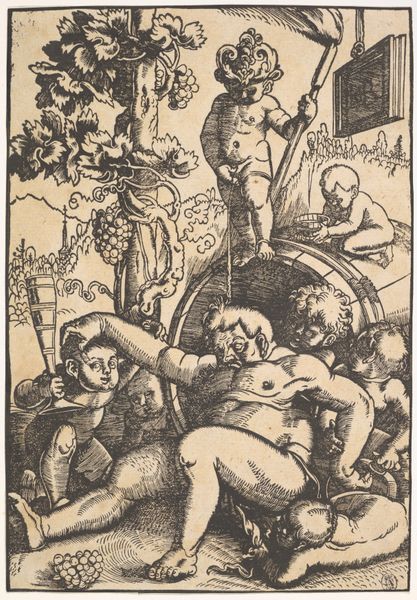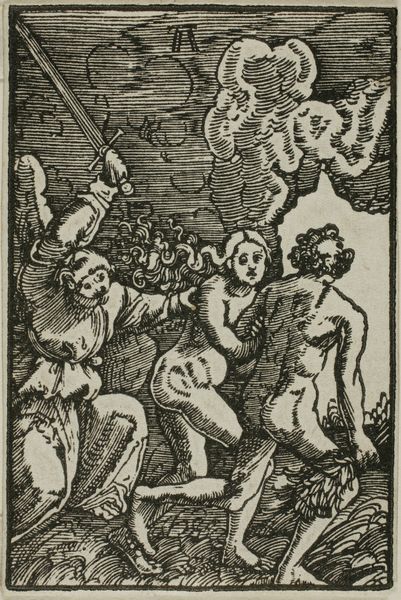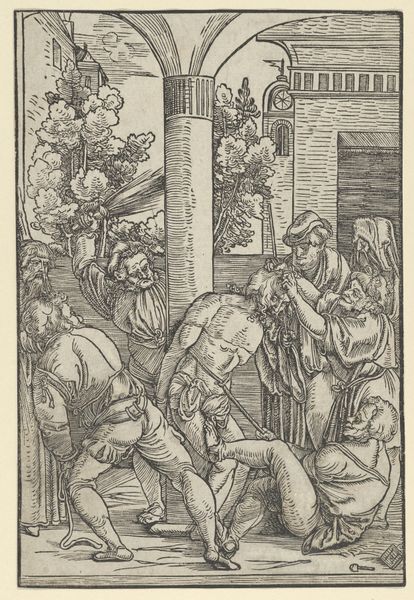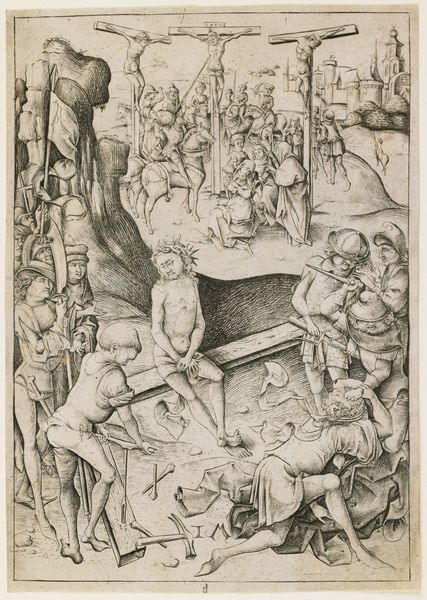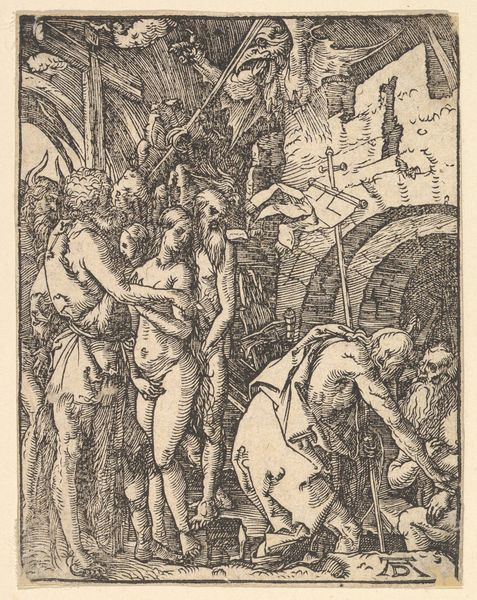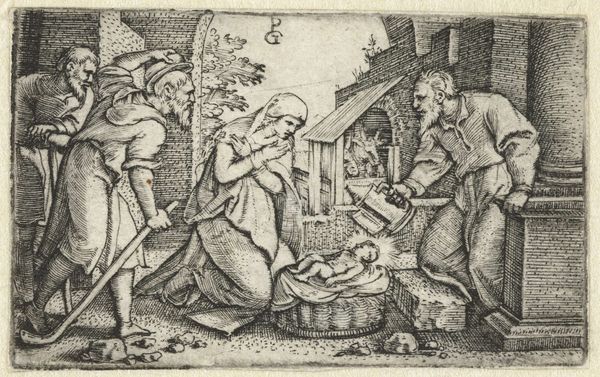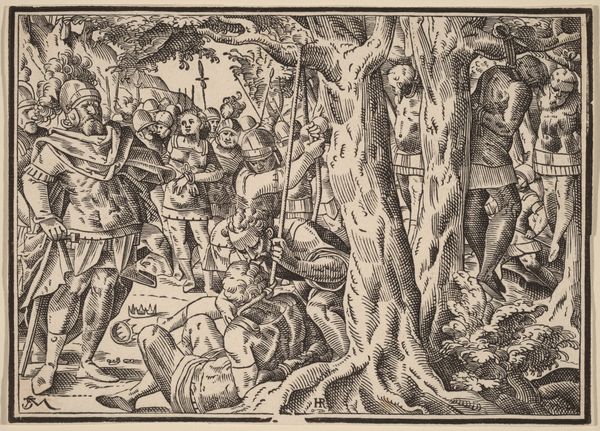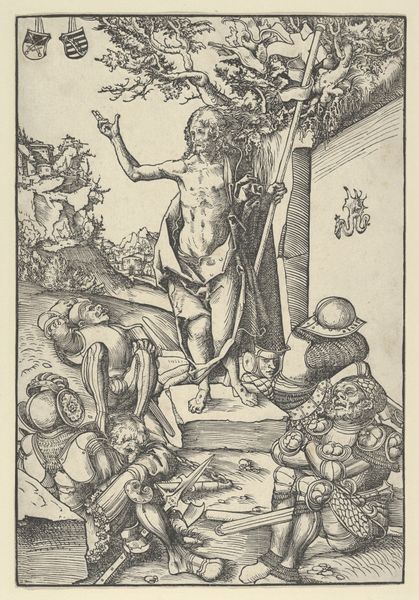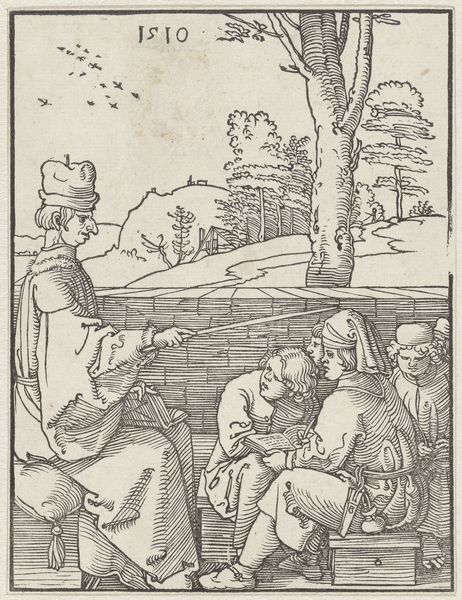
drawing, print
#
drawing
#
mother
#
pen drawing
#
mechanical pen drawing
# print
#
pen illustration
#
pen sketch
#
junji ito style
#
ink line art
#
female-nude
#
child
#
pen-ink sketch
#
pen work
#
tattoo art
#
doodle art
#
male-nude
Dimensions: Sheet: 5 1/16 × 3 7/16 in. (12.8 × 8.7 cm)
Copyright: Public Domain
Editor: This is Hans Baldung's "Two Mothers with Children (Die Kinderaue)", made sometime between 1507 and 1517. It's a pen drawing or print, depicting, well, quite a few nude figures! The chaos is captivating but also overwhelming. What can you tell me about it? Curator: It's chaos with purpose! Baldung presents us with a “Kinderaue” – a children’s meadow – a concept brimming with symbolic potential in the early 16th century. Think about societal pressures of motherhood and female fertility during this time. What ideologies do you see playing out here? Editor: I see nurturing but I'm struck by the objectification of these mothers. They're almost hyper-fertile beings, less individuals, more representations of motherhood. Curator: Precisely. And this intersects with anxieties about controlling female bodies. Notice how the idealized classical form clashes with realistic representation; for instance, in the swell of their bellies. Do you think this tension speaks to the societal pressures and the physical realities of women in the Northern Renaissance? Editor: That's insightful. I never really noticed the realism mixed within the "ideal." How much could be the social role in dictating the beauty standards of that era? Curator: The lens through which artists – largely men – viewed women shaped those standards. The pen drawing unveils vulnerability and questions the imposition of an artistic structure within motherhood and beauty, offering room for an authentic maternal self to emerge. What is the message about patriarchal standards about what they expect to impose to beauty at the end of the Renaissance era? Editor: Seeing it like this shifts my perception. I thought it was a simple chaotic depiction, but now I see commentary on societal expectations. Curator: Art acts as a critical mirror, prompting us to investigate gender and power complexities embedded within the history. Thank you!
Comments
No comments
Be the first to comment and join the conversation on the ultimate creative platform.
